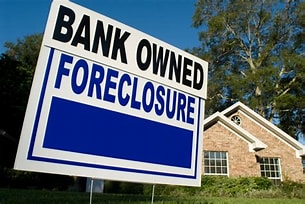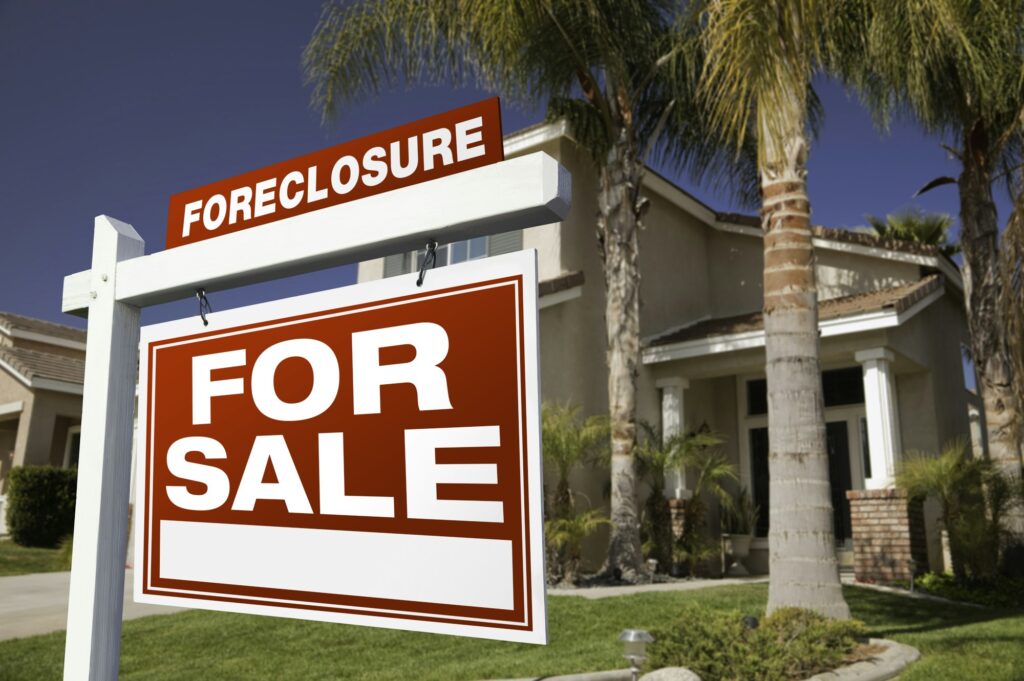Why Choose Venture REI
When it comes to residential real estate investments, choosing the right partner is crucial to maximizing your returns and achieving long-term success. Venture REI offers a range of benefits that make it the preferred real estate investment resource for individuals interested in making money in residential real estate.
Expertise in Residential Real Estate
One of the key reasons to choose Venture REI is their expertise in residential real estate. With years of experience in the industry, their team of experts understands the nuances of the market and can provide valuable insights and guidance. Whether you’re a seasoned investor or just starting out, having access to their expertise can help you make informed decisions and navigate the complexities of the real estate landscape.
Venture REI is well-versed in various investment strategies for single-family homes, including fix-and-flip, rental properties, distressed properties, and vacation rentals. They have a deep understanding of market trends, property valuation, and investment strategies, allowing them to provide tailored advice and support based on your specific goals.
Comprehensive Investment Resources
Venture REI offers comprehensive investment resources designed to support every aspect of your residential real estate investment journey. They provide valuable content on their website, covering a wide range of topics, such as finding underpriced homes, retirement planning, managing investment risks, diversifying your portfolio, and much more.
Their resources cover various investment strategies, including short-term and long-term gains, leveraging financing options, and building a real estate investment portfolio. Whether you’re interested in traditional rental properties, fix-and-flip projects, or exploring alternative investment opportunities, Venture REI provides the information and tools you need to make informed decisions.
Additionally, Venture REI offers access to a network of industry professionals, such as property management experts, real estate agents, and home inspectors. These connections can be invaluable in ensuring the smooth execution of your investment plans and maximizing your returns.
By choosing Venture REI as your preferred real estate investment resource, you gain access to their expertise in residential real estate and a wealth of comprehensive investment resources. Whether you’re looking for guidance on investment strategies, market trends, or property valuation, Venture REI has the knowledge and tools to support you every step of the way.
Maximizing ROI through Renovations
To maximize the return on investment (ROI) in residential real estate, strategic renovations play a crucial role. By understanding the concept of ROI and identifying high ROI renovations, investors can make informed decisions that yield profitable outcomes.
Understanding Return on Investment (ROI)
Return on Investment (ROI) is a key metric used to assess the profitability of an investment. In the context of residential real estate renovations, ROI represents the percentage of the cost of the renovation that is recouped through increased property value. It is calculated by dividing the net gain from the renovation by the cost of the renovation and expressing it as a percentage.
Investing in renovations with a high ROI can significantly impact the overall profitability of a real estate investment. It is important to carefully evaluate the potential ROI of each renovation project to ensure that resources are allocated efficiently and effectively.
High ROI Renovations for Residential Real Estate
Certain renovations have consistently shown higher ROI in residential real estate projects. These renovations not only enhance the aesthetics of the property but also add substantial value. Here are some examples:
| Renovation | Average ROI |
|---|---|
| Garage Door Replacement | 97.5% |
| Manufactured Stone Veneer Installation | 95.6% |
| Minor Kitchen Remodel | 77.6% |
| Bathroom Remodel | 67% |
| Deck Addition | 75% |
| Basement Remodel | 70% |
Figures courtesy of Better Homes & Gardens and AllBetterApp.
Kitchen remodels have the potential to deliver the highest ROI, with an average return of 81% (Better Homes & Gardens). Upgrading appliances, replacing countertops, refinishing cabinets, and improving lighting are key elements that contribute to the increased value of the property (LinkedIn).
Bathroom renovations also offer a significant return on investment, with an average ROI of 67%. Upgrading fixtures, flooring, tiles, lighting, storage solutions, and modern finishes can greatly influence buyers’ impressions and add value to a home.
Creating inviting outdoor living spaces and enhancing curb appeal can also provide a substantial ROI. Adding a deck or patio can result in a return on investment of about 75%, while improving landscaping and exterior lighting can elevate a property’s overall appeal.
In addition, energy-efficient upgrades such as installing energy-efficient windows, upgrading insulation, replacing outdated HVAC systems, and incorporating smart home technologies not only reduce utility costs but also increase home value, attracting energy-conscious homebuyers (LinkedIn).
By prioritizing high ROI renovations, investors can ensure that their resources are allocated wisely, resulting in increased property value and a maximized return on investment. However, it’s important to consider the specific market conditions and preferences of potential buyers in order to make informed decisions that align with the target demographic and location.
Key Renovations for Value Maximization
When it comes to maximizing the return on investment (ROI) through residential real estate renovations, certain key renovations have proven to be particularly effective. Investing in these renovations can significantly increase the value of your property, making it more attractive to potential buyers or tenants. Let’s explore three key renovations that can help maximize value in residential real estate.
Kitchen Remodels for Increased Value
Renovating the kitchen is often considered one of the most impactful renovations in terms of increasing property value. According to Martha Stewart, renovating the kitchen can provide the highest ROI in residential real estate renovations. With the kitchen being a central gathering space in a home, potential buyers or tenants often place great importance on its design and functionality.
A well-executed kitchen remodel can yield an average ROI of 81% according to Better Homes & Gardens. The key is to strike a balance between aesthetics and practicality. Upgrading appliances, installing modern cabinetry, improving lighting, and updating countertops and backsplashes are some of the ways to enhance the overall appeal of the kitchen.
Bathroom Renovations for Added Value
Bathroom renovations are another renovation area that can provide a significant return on investment. According to Better Homes & Gardens, bathroom renovations can yield an average ROI of 67%. A well-designed and updated bathroom can greatly enhance the desirability and value of a property.
When renovating a bathroom, consider elements such as fixtures, flooring, vanities, and lighting. Upgrading to modern fixtures and incorporating energy-efficient features can add appeal and functionality to the space. Additionally, creating a spa-like atmosphere with features like a luxurious shower or bathtub can further increase the value of the bathroom.
Outdoor Living Spaces and Curb Appeal
Improving outdoor living spaces and enhancing curb appeal can significantly boost the value of a residential property. Potential buyers or tenants often form their first impressions based on a property’s exterior appearance. Enhancing the curb appeal not only makes the property more visually appealing but also increases its overall value.
Adding outdoor features like a deck, patio, or landscaping can have a substantial impact on a property’s value. According to Martha Stewart, adding a deck or patio can increase a home’s value by up to 12%. Outdoor living spaces provide additional areas for relaxation and entertainment, appealing to a wide range of buyers or tenants.
Investing in landscaping improvements, such as maintaining a well-manicured lawn, planting flowers, and updating walkways, can further enhance curb appeal. These enhancements create a welcoming and aesthetically pleasing exterior, increasing the overall desirability and value of the property.
By focusing on kitchen remodels, bathroom renovations, and outdoor living spaces, you can maximize the value of your residential property. These key renovations have consistently shown to provide significant returns on investment. Remember to plan your renovations carefully, considering factors such as budget, market trends, and the preferences of your target audience.
Factors Affecting ROI in Renovations
When it comes to maximizing the return on investment (ROI) in residential real estate renovations, several factors come into play. Understanding these factors is essential for making informed decisions and ensuring the profitability of your renovation project.
Location and Local Market Conditions
The location of the property and the local market conditions can have a significant impact on the ROI of a renovation. Different neighborhoods and markets have varying demands and buyer preferences, which can influence the value that renovations add to a property. It’s crucial to assess the neighborhood’s desirability, proximity to amenities, schools, transportation, and other factors that potential buyers or renters may consider when determining the value of a property (Source).
Market conditions, such as supply and demand dynamics, also play a role in determining the ROI of renovations. In a seller’s market with limited inventory, renovations that enhance a property’s appeal can yield higher returns. Conversely, in a buyer’s market with plenty of available properties, renovations may be necessary to compete and attract potential buyers or renters.
Cost Considerations and Budgeting
Careful cost considerations and budgeting are crucial to achieving a favorable ROI in renovations. It’s essential to accurately estimate and control costs throughout the renovation process, including materials, labor, permits, and any unexpected expenses that may arise. Proper budgeting ensures that the project remains financially viable and that the renovation costs do not exceed the potential increase in property value.
Additionally, understanding the scope of the renovation and its potential impact on the property’s value is essential for cost considerations. Some renovations, such as kitchen remodels or bathroom renovations, tend to provide higher returns compared to others. By prioritizing renovations that align with market demands and offer a higher ROI, investors can optimize their renovation budget and maximize profitability.
After Renovation Value (ARV) Calculation
Calculating the After Renovation Value (ARV) is a critical step in assessing the potential ROI of a renovation project. The ARV is the estimated value of the property after all planned renovations are completed. Appraisers use a specific method to calculate the official ARV, taking into account factors such as property location, square footage of the house, sales comps of recently sold homes in the neighborhood, proposed renovation plans, cost estimates from contractors, purchase price, and more (Source).
By accurately estimating the ARV, investors can determine the potential return on their renovation investment. It allows them to assess whether the renovation costs are justified by the expected increase in the property’s value. Conducting a thorough analysis of the ARV helps investors make informed decisions about renovation projects and ensures that the return on investment aligns with their financial goals.
Considering these factors – location and local market conditions, cost considerations and budgeting, and after renovation value (ARV) calculation – is crucial for maximizing the ROI in residential real estate renovations. By carefully evaluating these aspects and making strategic decisions, investors can optimize their renovation projects and achieve profitability in the competitive real estate market.
Mistakes to Avoid in Renovations
When it comes to renovating a property for maximum return on investment (ROI), it’s important to avoid common mistakes that can hinder the success of your project. By being aware of these pitfalls, you can ensure a smoother and more profitable renovation process. Here are three key mistakes to avoid:
Insufficient Planning and Financing
One of the most crucial mistakes investors make when renovating a property is insufficient planning and financing. Not having enough funds allocated for the renovation can significantly impact your profits, especially if loans are needed to finance the investment (LinkedIn). Before starting any renovations, it’s essential to have a clear vision and plan for the project. This includes estimating the costs involved, setting a budget, and allowing for contingencies.
To avoid financial setbacks, consider working closely with a financial advisor or real estate investment expert who can help you assess your financing options and create a realistic budget. By adequately planning and securing the necessary funds, you can ensure a more successful and profitable renovation.
Underestimating Time and Project Delays
Underestimating the time it takes to complete a renovation project is another common mistake investors should avoid. Delays can impede the return on investment and add additional costs to the project (LinkedIn). It’s important to have a realistic timeline for the renovation process, taking into account factors such as permits, contractor availability, and unexpected issues that may arise during the project.
To mitigate delays, thoroughly research and plan each step of the renovation, including obtaining necessary permits and scheduling contractors in advance. Regular communication with contractors and a clear understanding of project timelines can help ensure that the renovation stays on track. By realistically estimating the time required and accounting for potential delays, you can minimize disruptions and maximize your ROI.
Choosing the Right Contractors
Choosing the right contractors or professionals for the renovation is crucial for a successful outcome. Making the wrong choice can lead to subpar work, project delays, and additional costs. To avoid this mistake, take the time to thoroughly vet and select contractors who have experience in the specific type of renovation you require.
Start by researching and obtaining recommendations from trusted sources such as real estate investment professionals or local industry associations. Request references from previous clients and review their portfolios to assess the quality of their work. It’s also essential to clearly communicate your expectations and project requirements to potential contractors during the selection process.
By carefully selecting contractors who are reliable, skilled, and have a good track record, you can ensure that your renovation project is completed to a high standard and within the agreed-upon timeline. This will ultimately contribute to maximizing your ROI.
Avoiding these common mistakes in renovations, along with considering factors such as location, cost considerations, and after renovation value (ARV) calculation, can greatly enhance your chances of achieving a successful and profitable renovation. By taking a strategic and well-planned approach, you can unlock the full potential of residential real estate renovations.
Maximizing ROI in Rental Properties
Investing in rental properties can be a lucrative venture, and maximizing return on investment (ROI) is a key objective for landlords and real estate professionals. Understanding rental property ROI and implementing cost-effective renovations can help enhance profitability and attract quality tenants. Let’s delve into these important aspects.
Understanding Rental Property ROI
ROI is a crucial financial metric for assessing the performance of a rental property. It measures the profitability relative to the overall cost of the property. A positive ROI indicates a profitable investment, while a negative ROI suggests that the rental income does not adequately cover the investment and associated expenses. Ideally, an ROI in the range of 6-10% or higher denotes a sound investment (Steadily).
To calculate rental property ROI, divide the annual net operating income (NOI) by the total investment cost (including purchase price, renovation expenses, and closing costs), and then multiply by 100 to express it as a percentage. The formula is as follows:
ROI = (Annual Net Operating Income / Total Investment Cost) * 100
Understanding and calculating ROI allows landlords to make informed decisions about property upgrades and evaluate the effectiveness of their rental portfolio.
Cost-Effective Renovations for Rental Properties
Implementing strategic renovations can significantly impact rental property ROI. Here are some cost-effective renovations that can add value and attract tenants:
- Eco-Friendly Upgrades: Incorporating eco-friendly features, such as energy-efficient windows, LED lighting, and low-flow water fixtures, not only attracts environmentally conscious tenants but also reduces utility expenses. These upgrades can contribute to a positive ROI by appealing to tenants who prioritize sustainability (Steadily).
- Smart Tech Integrations: Installing programmable thermostats, automated lighting systems, and security devices can provide a competitive edge in the rental market. These tech-savvy features attract tenants willing to pay a premium for convenience and advanced amenities, thereby increasing rental income and enhancing ROI (Steadily).
- Space Optimization: Increasing the square footage of a rental property through attic and basement conversions can improve marketability and rental value. Converting underutilized spaces into additional bedrooms, home offices, or functional living areas meets the growing demand for space, resulting in increased rental income and property value (Steadily).
Attracting Quality Tenants and Increasing Rental Income
Attracting quality tenants is crucial for maximizing rental property ROI. Here are some strategies to consider:
- Attention to Curb Appeal: Enhancing the property’s curb appeal through landscaping, exterior painting, and well-maintained common areas can attract potential tenants and justify higher rental rates. First impressions matter, and a visually appealing property creates a positive perception of its value.
- Quality Interior Upgrades: Focus on key areas that tenants prioritize, such as kitchens and bathrooms. Renovating these spaces with modern fixtures, updated cabinetry, and quality finishes can increase the desirability of the property and justify higher rental rates. Keep in mind that functionality and durability are important considerations when choosing materials.
- Effective Marketing and Tenant Screening: Invest in professional property listings, virtual tours, and detailed descriptions to attract reliable tenants. Implement thorough tenant screening processes to find individuals who are likely to pay rent on time and take good care of the property. This reduces the risk of vacancies and property damage, contributing to long-term ROI.
By understanding rental property ROI, implementing cost-effective renovations, and attracting quality tenants, landlords can maximize their returns and create a successful rental property investment portfolio.








